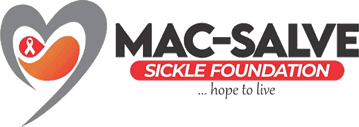HOW TO AVOID GIVING BIRTH TO SICKLE CELL BABY
Sickle Cell Disease (SCD) is a genetic disorder characterized by abnormally shaped red blood cells, leading to various health complications. While it is an inherited condition, there are ways to reduce the risk of having a child with SCD. Understanding the disease and taking proactive measures can significantly contribute to avoiding the birth of a sickle cell baby.
1. Know Your Genetic Background:
SCD is an autosomal recessive genetic disorder. Both parents must carry a specific gene mutation for the child to inherit the disease. Understanding your own genetic background is crucial. If both parents have the sickle cell trait, there is a 25% chance of having a child with SCD.
2. Genetic Counseling:
Genetic counseling provides individuals and couples with information about the likelihood of having a child with SCD based on their genetic makeup. Couples with a family history of SCD or those from high-risk populations should consider genetic counseling before planning a pregnancy.
3. Preconception Screening:
Screenings can identify carriers of the sickle cell trait before conception. If both partners are carriers, they can explore options such as in vitro fertilization (IVF) with pre-implantation genetic diagnosis (PGD) to select embryos without the SCD mutation.
4. Explore Assisted Reproductive Technologies:
Assisted reproductive technologies, such as IVF, can be combined with techniques like pre-implantation genetic testing to increase the chances of having a healthy baby.
5. Educate Yourself about SCD:
Understanding the disease, its symptoms, and potential complications is essential. Being well-informed helps individuals make educated decisions regarding family planning.
6. Opt for Preconception Health Check-ups:
Ensure both partners are in good health before attempting to conceive. Managing chronic conditions, optimizing nutrition, and maintaining a healthy lifestyle contribute to overall well-being.
7. Consider Adoption or Surrogacy:
For couples with a high risk of having a child with SCD, adoption or surrogacy might be viable alternatives to biological pregnancy.
8. Supportive Community and Resources:
Joining support groups or seeking guidance from healthcare professionals can provide emotional support and valuable information. Connecting with others who have experienced similar situations can be reassuring.
9. Promote Awareness:
Raising awareness about SCD within communities can help individuals understand the importance of genetic testing and family planning. Knowledge empowers individuals to make informed decisions about their reproductive health.
In conclusion, avoiding the birth of a sickle cell baby involves a combination of genetic awareness, preconception screening, and informed decision-making. By taking proactive steps, individuals and couples can mitigate the risk of passing on the SCD gene to their children, ensuring a healthier future for their families.
Article of
MAC-SALVE SICKLE FOUNDATION


Add a Comment